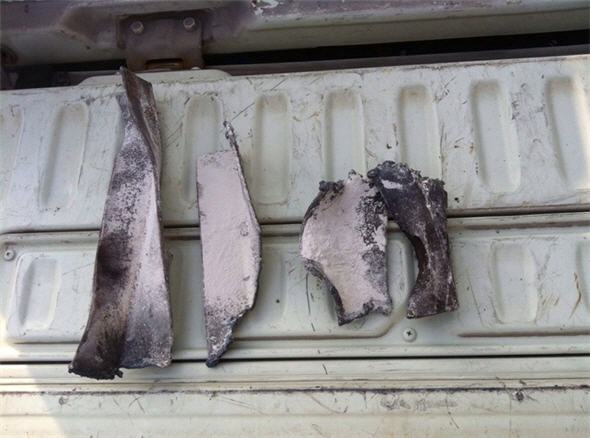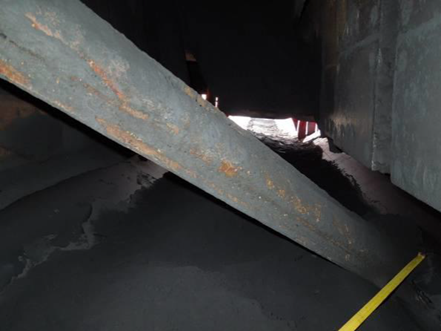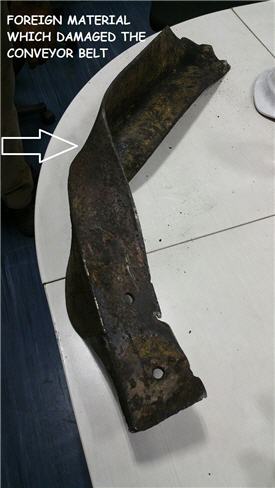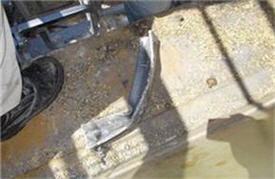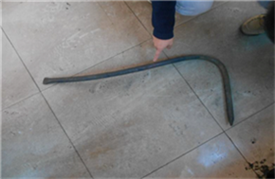The Association has become aware of a recent increase in the number of claims arising out of damage caused to conveyor belts. Damage typically occurs when metal pieces intermixed with the cargo drop on the conveyor belts thus leading to dents and scratches to the belts, and occasionally to belts even being split longitudinally or across.
A review of a number of the conveyor belt claims reported by our members shows that damage predominantly occurs during discharge of coal and iron ore. However, incidents have also occurred during discharge of other cargoes such as wheat, corn and furnace slag. The highest frequency of conveyor belt damage is reported from Chinese ports, which probably has a direct correlation with the volumes of ores and coal being shipped to China.
Conveyor belt damage typically generates claims for repairs to- or replacement of the belts themselves, as well as for the production losses incurred by the port due to the cease in operation whilst restoring of the shore installation is being undertaken. Although most claims appear to be reasonably calculated and relatively modest in size, seriously inflated claims have also been reported with allegations of six- and seven figure production losses. The interruption in the discharging operations may also lead to costly time losses for the member or client, and, in some instances, even to missed laycans or fixtures.
In some of the reported cases, the metal objects in question have been identified as pieces of mining equipment which will have intermixed with cargo during production. However, the objects are not always identifiable. Although it is more likely that the objects are of shore than of ship origin, it is of utmost importance to preserve the object so that it can be surveyed or even subjected to metallurgical testing if need be. Even though a terminal's claim will likely be presented to the owners of the vessel, there should be good prospects of passing on a claim down the charter chain or to the shippers of the cargo provided that it can be proved that the object did not originate from the vessel. Further to this point, owners will be advised to make sure that they do not take on any contractual risk vis-á-vis the charterers for impure cargo being loaded on board the vessel.
In the coal trade, it is reported that an increased use of metal detectors and/or magnetic separators in the loading chain is helping to minimise the risk of stray pieces of metal being loaded together with the cargo. Certain metal detectors can be tuned so as to ignore conductive or magnetic ores, and will therefore be effective to detect stray metal pieces also during loading of iron ore. If such equipment is not installed at the loading port, it would be worthwhile issuing a Letter of Protest against this or at least make a note of it in the log books or the statement of facts.
Any member or charterer client facing a conveyor belt damage are recommended to immediately notify their local Skuld office of the incident. The vessel and ship agents should be instructed to ensure that the foreign metal object and the damaged conveyor belt are both preserved for later surveying and testing. If the receivers remove either of these objects, Letters of Protest should be duly issued against this. Finally, the (sub) charterers and/or the shippers of the cargo should be placed on notice for the damage and invited to participate at joint surveys of the conveyor belt and the metal object.
|
|
|
|
|
|
